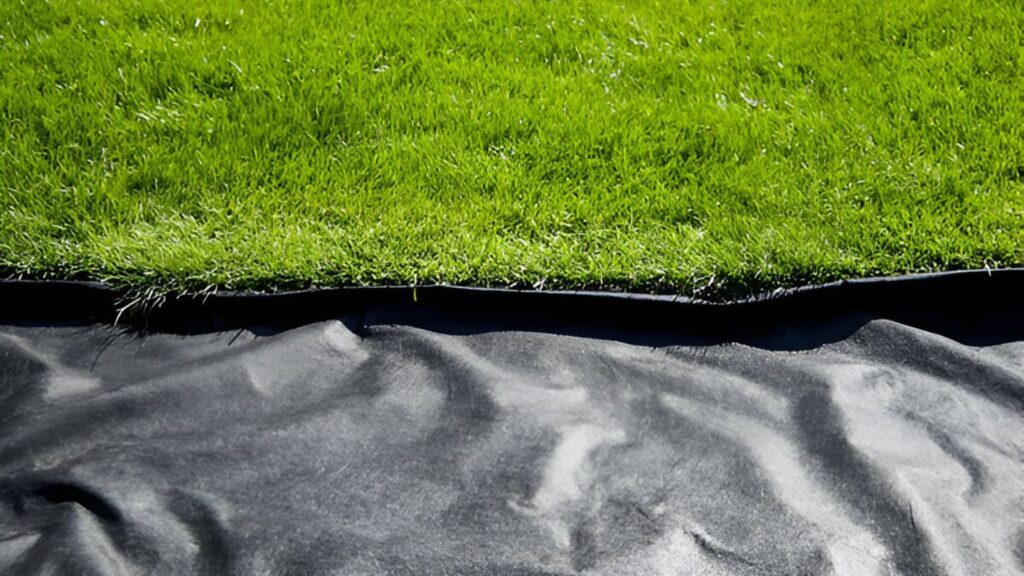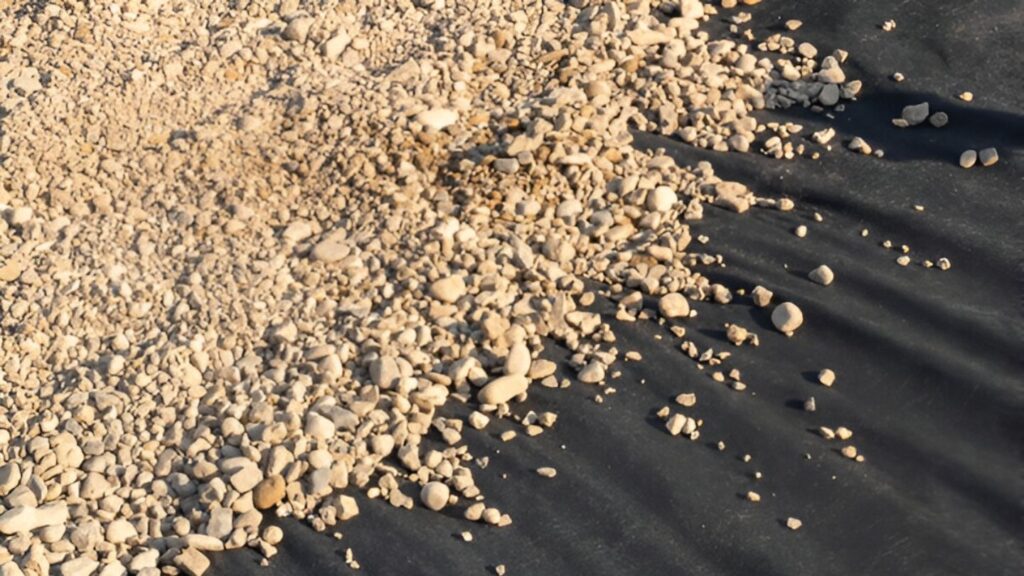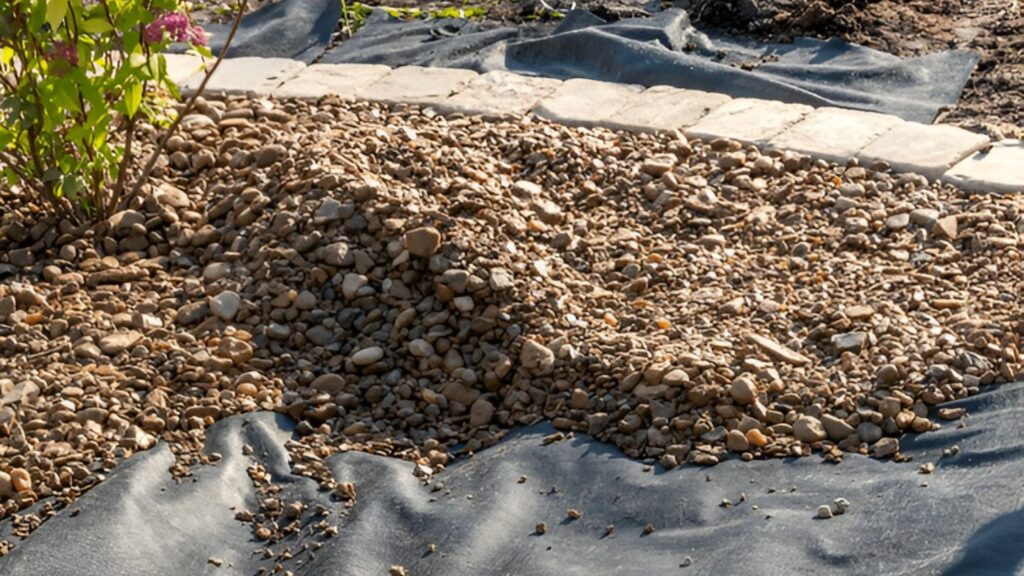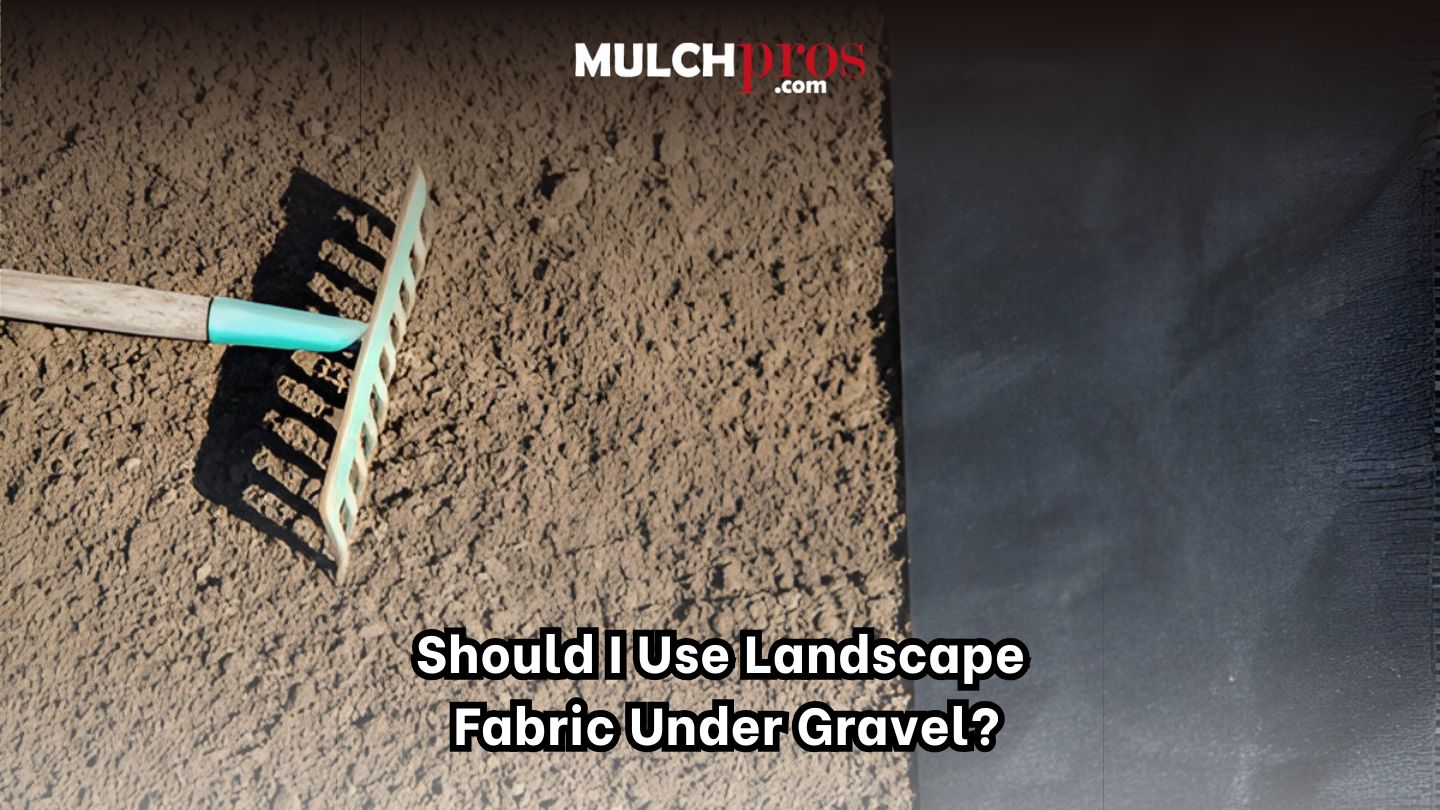When it comes to installing gravel in your outdoor spaces, you may wonder whether using landscape fabric underneath is worth the effort. This simple addition can make a big difference in maintaining your gravel areas. In this blog, we’ll explore the pros of using landscape fabric under gravel.
Key Takeaways
- Landscape fabric helps control weeds, prevent erosion, and stabilize soil while allowing water and oxygen to reach plant roots.
- Using landscape fabric under gravel offers benefits like reduced weed growth, erosion control, and long-term cost savings.
- Proper installation involves preparing the area, removing weeds, laying the fabric securely, and spreading gravel for a durable and low-maintenance solution.
What is Landscape Fabric?

A key component in gardening and landscaping, landscape fabric is used to suppress weeds, help prevent soil erosion, and support soil stability. Landscaping fabric, also known as geotextile material, is used for weed prevention, soil stabilization, and erosion control. It is commonly produced from a variety of materials, including linen, polyester, polypropylene, and recycled components. This ensures the material’s endurance and efficiency. The design of this fabric allows for both water and air to penetrate it effortlessly, which enables roots to breathe while still promoting robust plant development. For those looking to achieve superior results in their garden endeavors, incorporating landscape fabrics is indispensable.
There are four primary categories of landscape fabrics: woven varieties like spun or perforated ones, along with non-woven types, which are readily available on the market today. Woven fabrics typically consist of interlaced yarns made from sturdy substances such as linen or synthetic polymers like polypropylene or polyester, which provide considerable strength and longevity for various applications. On the other hand, non-wovens resemble felt composed by bonding artificial fibers together. These deliver outstanding capabilities not only for controlling weed growth but also for aiding in maintaining stable ground conditions. Each kind has its distinct application benefits, so identifying an appropriate woven or non-woven fabric tailored specifically to your individual project requirements can prove crucial.
Benefits of Using Landscape Fabric Under Gravel

Employing landscape fabric beneath gravel serves as an effective strategy for curbing the emergence of weeds, acting as a shield to stop weed roots from penetrating through the gravel layer. Weed control fabric is particularly effective in preventing weed growth and reducing the need for manual weeding. This results in decreased manual weeding and overall upkeep efforts. This material contributes to controlling erosion by anchoring the soil underneath it, which is particularly advantageous for stabilizing surfaces like gravel driveways that are susceptible to being washed away by rain.
The use of such fabric can also lead to notable cost efficiency by maintaining the integrity of the underlying grade. This diminishes the need for regular topping up with fresh gravel, leading not only to monetary savings but also to conserving time. Its role in modulating moisture levels and regulating temperature within the soil fosters healthier conditions around root systems in nearby planting beds.
These compelling benefits establish landscape fabric as an exemplary choice when striving toward constructing a low-upkeep yet robust graveled space.
Types of Landscape Fabric Suitable for Gravel

Several choices are available when selecting the appropriate landscape fabric for gravel-related uses. Woven landscape fabric is often employed beneath gravel driveways and walkways due to its ability to permit the passage of water and nutrients while also serving as an effective barrier against weeds. Woven landscape fabrics are constructed using woven polypropylene, polyester, or linen yarns, providing durability and permeability for various applications. This variant of fabric possesses the robustness necessary to endure the pressures exerted by gravel without succumbing to rips.
For applications involving gravel, non-woven fabrics come highly recommended thanks to their superior stability features and capacity for weed control. Spun landscape fabric constitutes another viable choice specifically suited for use with gravel paths and retaining walls because it enhances support strength and longevity.
Soliciting guidance from industry experts can be beneficial in determining which type of landscape fabric best meets your requirements, ensuring you achieve the desired outcomes efficiently.
Choosing the Right Landscape Fabric
Choosing the right landscape fabric is crucial for a successful installation. With so many options available, it can be overwhelming to decide which one to use. Here are some factors to consider when selecting a landscape fabric:
Factors to Consider When Selecting a Landscape Fabric
When choosing a landscape fabric, consider the following factors:
- Purpose: Determine the primary purpose of the landscape fabric. Are you using it for weed control, erosion control, or to stabilize soil temperature? Each purpose may require a different type of fabric.
- Type of Soil: Assess the type of soil where the fabric will be installed. Different soils, such as sandy, clay, or loamy, may require specific types of fabric to ensure optimal performance.
- Climate: Consider the local climate. Extreme temperatures, heavy rainfall, or intense sunlight can affect the durability and effectiveness of the fabric. Choose a fabric that can withstand your area’s weather conditions.
Landscape Fabric Thickness and Weight
Landscape fabric thickness and weight are important factors to consider. A thicker, heavier fabric will provide more durability and longevity but may be more expensive. A thinner, lighter fabric may be more budget-friendly but may not provide the same level of performance.
- Thickness: Landscape fabric thickness is typically measured in mils (thousandths of an inch). A thicker fabric will offer more durability and resistance to punctures, making it ideal for high-traffic areas or places with sharp objects.
- Weight: Landscape fabric weight is usually measured in ounces per square yard. A heavier fabric will provide more stability and resistance to wind and water, ensuring it stays in place and performs well over time.
Importance of Woven Fabric for Durability
Woven fabric is a popular choice for landscape fabric due to its durability and longevity. Woven fabric is made by weaving together threads of material, creating a strong and stable fabric.
- Woven Fabric Benefits: Woven fabric provides excellent durability, resistance to punctures, and stability. It is also easy to install and can be cut to size, making it a versatile option for various landscaping projects.
- Woven Fabric Types: There are several types of woven fabric available, including polypropylene, polyester, and linen. Each type offers unique benefits, so choose the one that best suits your project’s needs.
Professional Installation Services
Should you find yourself lacking confidence or expertise in installing landscape fabric, think about enlisting the help of experts. They can guarantee the choice of an ideal weed barrier material suited to your specific needs while also efficiently prepping the land for installation. Such proficiency is particularly beneficial on extensive or intricate jobs where meticulous attention and swift execution are essential.
Utilizing professional services provides access to superior installation quality due to their possession of specialized tools and significant experience in positioning fabric and evenly distributing gravel. By opting for skilled assistance, one can secure exceptional outcomes as well as enduring advantages from a properly executed gravel pathway or driveway installation.
To Conclude
Using landscape fabric under gravel can offer numerous benefits, including weed control, erosion prevention, and soil stabilization. By understanding the different types of landscape fabric and following a proper installation process, you can make the most of this versatile material.
Whether you choose to use landscape fabric or explore natural alternatives, the key is to select the right materials for your specific needs. With the help of professional services and high-quality products from Mulch Pros Landscape Supply, you can achieve a beautiful and long-lasting gravel pathway or driveway. If you are looking for gravel, river sand, topdressing blend, pea pebbles, or slate chips (mini or medium) or other landscaping options around Milton, we are your go-to source for top-tier landscaping materials and expert advice. Contact us today to get started on your next landscaping project!
Frequently Asked Questions
What are the main types of landscape fabric?
The main types of landscape fabric are woven, non-woven, spun, and perforated. Each type serves different purposes in gardening and landscaping, ensuring efficient weed suppression and moisture retention.
What are the benefits of using landscape fabric under gravel?
Installing fabric under gravel acts as a weed barrier, helping to maintain the soil structure and reduce erosion. It also cuts down on maintenance needs over time.
By placing landscape fabric beneath your gravel, you’re investing in both the longevity and aesthetic appeal of your landscaping efforts.
What types of landscape fabric are available?
There are two main types of landscape fabric: woven and non-woven. Woven landscape fabric is more durable and tear-resistant, making it suitable for heavy traffic areas or where sharp objects may be present. Non-woven landscape fabric is less expensive but still effective for most gardening and landscaping purposes.
What about moisture retention with landscape fabric?
One of the key benefits of using landscape fabric is its ability to help with moisture retention in the soil. The material allows water and nutrients to pass through while retaining enough moisture for plant growth.


